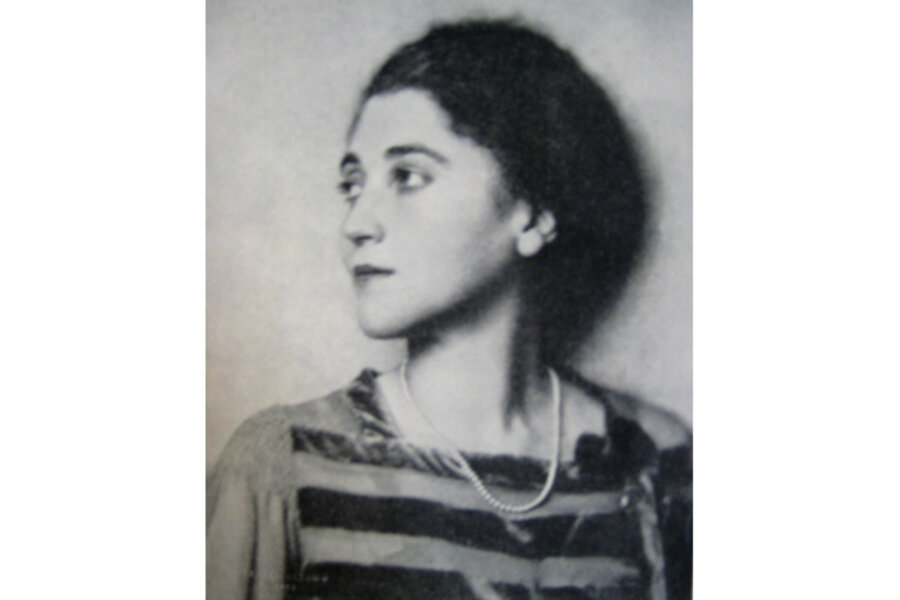Murderesses Row: guns, gams, and glamour in 1920s Chicago
Loading...
Here's a name for you: Roxie Hart.
If you're a fan of musicals, you may already be humming a tune from "Chicago." "When You're Good to Mama," maybe. Or "We Both Reached for the Gun."
There was a Roxie in real life. While she had a different name, she absolutely did reach for the gun. Her paramour, a man who didn't happen to be her husband, may have grabbed for it, too.
Unfortunately for him, she got there first. And a celebrity criminal was born, a glamorous and modern 1920s woman whose killer story lives on in the fictional Roxie Hart, a star character on the stage and screen for more than 80 years.
How much of "Chicago" – the play-turned-musical-turned-movie – is based on reality? Did newspaper "sob sisters" really conspire to free the women of Murderesses Row? And was there really a sleazy lawyer like the one played to perfection by Richard Gere on the silver screen?
Oregon journalist Douglas Perry answers these questions in his captivating new true-crime book, "The Girls of Murder City: Fame, Lust and the Beautiful Killers Who Inspired 'Chicago,' " an epic tale of guns, gams and glamour.
I asked Perry about life (and death) in the Second City and the young reporter of faith who turned violent life into timeless art.
Q: Even though there were plenty of killers on Chicago's "Murderesses Row" in the early 1920s, almost all of them were ultimately acquitted of murdering their boyfriends or husbands. How come?
A: Juries in Illinois remained stubbornly all-male, and one of the absolutes for the average juryman was the Victorian feminine ideal: Women inherently were morally superior to men, and they weren't capable of premeditated violence. When a woman turned violent, there had to be exculpatory reasons for it.
Some of the Chicago newspapers had "sob sisters," who covered crime by women and tried to elevate them. When a woman shot her husband or her boyfriend, the sob sister played up the tragedy of it: not what happened to the victim but to the woman.
There had to be a good reason for the crime. One reason was that the woman was drunk and, in that era, a man had to be responsible. Another common reason was that she'd been abused. Or the modern city, the clamor and bustle and pollution, made her insane.
Q: Why were so many women up to no good at that time?
A: Just a few years earlier, a respectable woman didn't go out without a chaperone. Then, beginning in the early years of the 20th century and accelerating with Prohibition and the suffrage movement, women were out in the world, going to speak-easies and ballrooms.
Women were feeling their oats and enjoying freedom and independence.
Add in the availability of guns and the celebration of lawlessness that came with Prohibition, and it makes sense that more women were committing violence.
Q: What was Chicago, the ultimate modern city, like in the 1920s?
A: Of all the large cities in the country, it was the most open to doing something new. It was the first Northern city that really embraced jazz, and it was the headquarters of bootlegging.
Q: A prim young woman named Maurine Watkins came to the big city from the sticks and got herself a job as a crime reporter. How did this nice girl end up hanging out with some seriously not-nice people?
A. She grew up in a little town in Indiana and was very religious, but she was a liberated woman too. She remained a good Christian her whole life, but she wanted to be a playwright and get out there and experience real life. The place to do that was Chicago.
Everyone on Murderesses Row saw this pretty, shy young woman, assumed she was a sob sister, and opened up to her, expecting she would present things in a way that was beneficial to them.
It took weeks for them to realize she was not like that. The Tribune was called the city's "hanging paper" because they were out for conviction always. That was their niche in the market.
Q: Watkins later wrote the play "Chicago," which inspired movies (including one with Ginger Rogers and the hit 2002 version) and a Broadway musical. How close was the plot to real life?
A: In the broad strokes, she stayed pretty close to the actual narrative. But her fictional characters were caricatures. She didn't want them to be too human because she didn't want her audience to sympathize with or relate to them. She wanted her audience to hate them.
Q: You point out that this was a very different time in journalism, when it was much more routine for reporters to shade the truth or even make it up entirely, which Watkins scrupulously didn't do.
A: There weren't journalism schools. The professionalization of journalism came later. But on the other hand, newspapers were a lot more fun to read.
Reporters really viewed police offers as competition: they wanted to solve crime first. There were no police spokesmen, and reporters had full access to police stations and jails 24 hours a day. They could sit in the cells and talk to the inmates and stay the night if they wanted to.
Q: What's relevant about the story of "The Girls of Murder City" today?
A: We tend to think that this celebrity mania is a recent phenomenon that grew out of cable television and the Internet and this ubiquitous media that we're all now surrounded with. That's not the case.
We've always been fascinated by celebrity in this country. That’s another way that Chicago was a pioneer.
Prior to the early years of the 20th century, celebrities for the most part were European royalty, national leaders, and war heroes. Chicago helped change that. They made killers famous and they made killers stars.
Randy Dotinga regularly reviews books for the Monitor.





